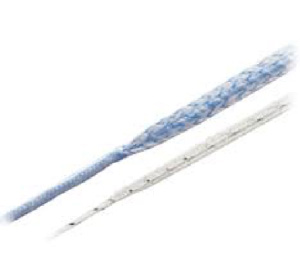Presentation and diagnosis
ACL tears are common in the sporting population. There is an increasing incidence of these injuries in younger people in recent years, perhaps reflecting more aggressive participation in high level sports at a young age.
These injuries commonly occur without direct contact. Patients will often recall that they were running in a straight line and then subtly changed direction, with the knee giving way suddenly. There is often a click or pop in the knee which usually proceeds to swell. In some people, there is occasionally no swelling of significance. These injuries are commonly associated with tears to the menisci ( 70%). These tears can usually be repaired if the injury is rapidly attended.
An MRI scan will assess the significance of injury and then determine whether there are lesions that require rapid attention. The sooner these injuries are assessed, the better. The less serious injuries can then be put back by between two and four weeks till surgery whilst the more serious injuries are urgently managed.
Assessment requires a physical examination by a qualified sub-specialist or sports doctor and then an MRI scan. Assessment of the matter requires careful interpretation of the findings of the MRI with the physical examination and mechanism of injury. No two injuries are the same. Treatment will depend on the type of injury pattern and needs to be made by an experienced surgeon.
Treatment options
In most patients that we see with these injuries, the option of surgery is taken. Most of our patients are active and wish to return to their previous quality of life. Without surgery, many patients find that there is a compromise in their quality of life.
The treatment involves surgery. This is usually a day only procedure that requires a general anaesthetic. You will require between a week and two weeks away from work, depending on your job. Crutches will be needed for a week or so, perhaps a little longer if the injury is more complex and if there is a meniscal repair performed.
The outcomes are very satisfying in the vast majority of patients. They regain the stability and function of the knee rapidly, returning, in almost all cases, to their original activity levels.
The surgical technique involves the use of a graft to restore the function of the torn ligament. The ACL has usually been damaged irreparably. A graft is usually obtained from your own hamstrings. Occasionally other sources of graft are considered. The original ACL is removed by the surgeon, through a telescope ( arthroscope ) that has been placed into the knee through small, key hole incisions. The original ligament is then replaced by your own hamstrings which have been harvested and prepared specially for the purpose.
There are screws and other special devices used to fix the graft in place whilst it heals to the body.
When the graft is taken and the replaced into your knee, it has lost its blood supply. For this reason, it needs a period of healing whilst the blood supply returns to the knee.

New treatment alternatives
There are new internal bracing systems being developed that may well revolutionise this treatment in some people, especially the very young. Dr Miniter is at the forefront of this international development in Australia.
Rehabilitation
Physiotherapy and exercise physiology (EP) has a definite place in your recovery. However, with precise surgery and your own enthusiastic participation, we aim to minimise this. You will be required to participate in a strengthening programme both before and after your surgery. We have a number of instructional videos that should allow you to recall what has been taught to you by the EP and physiotherapist.
